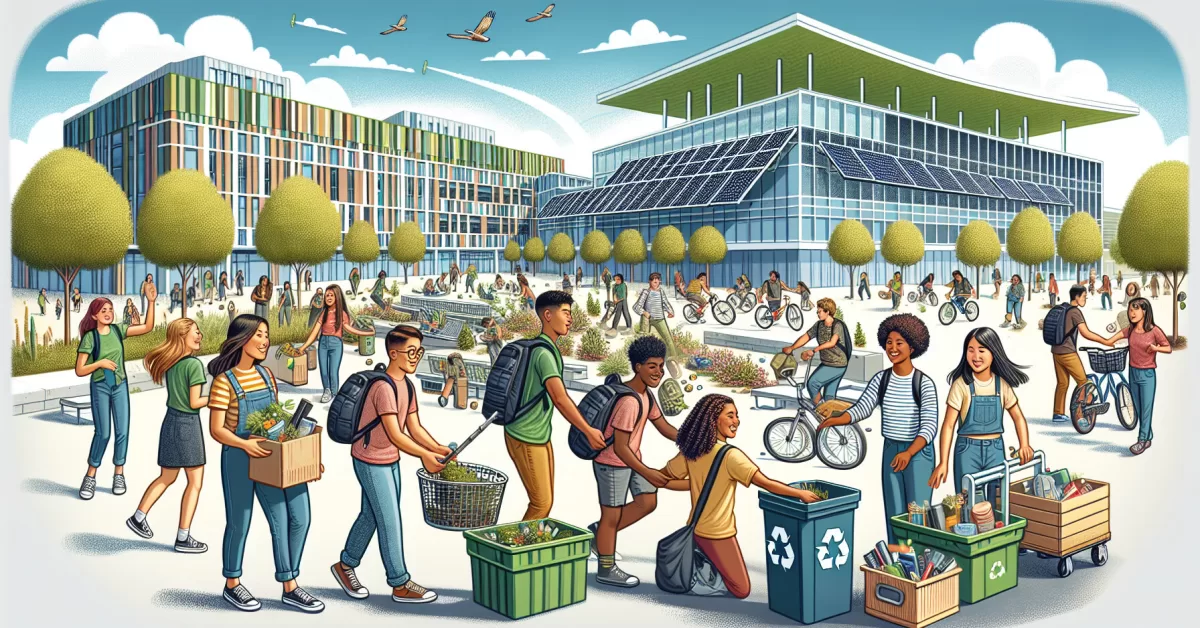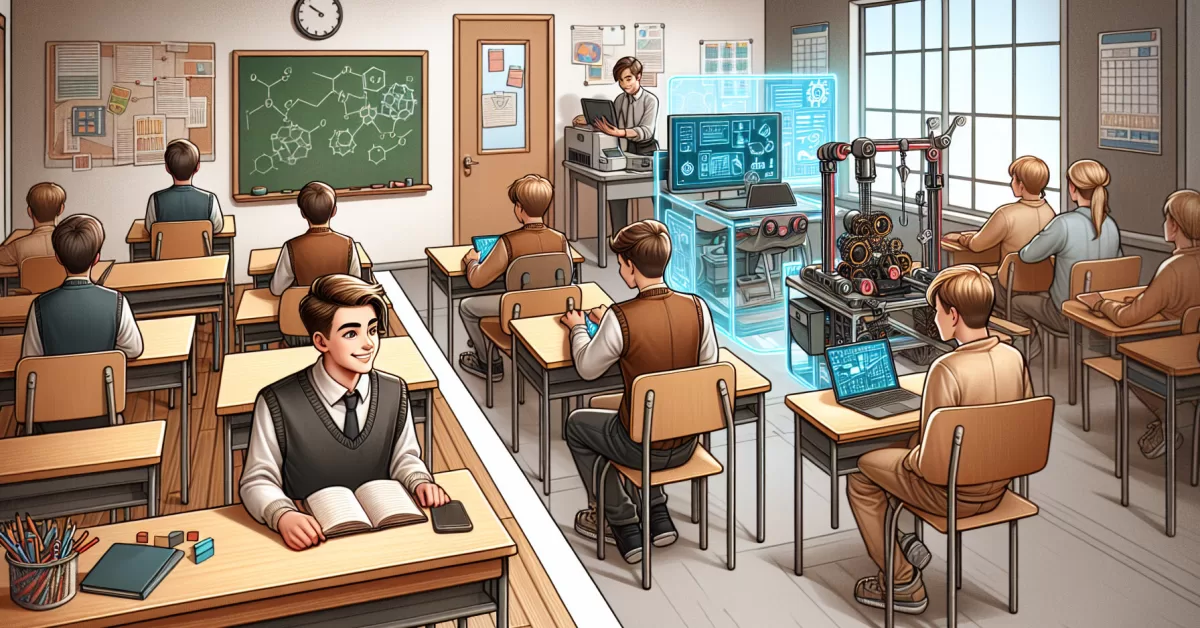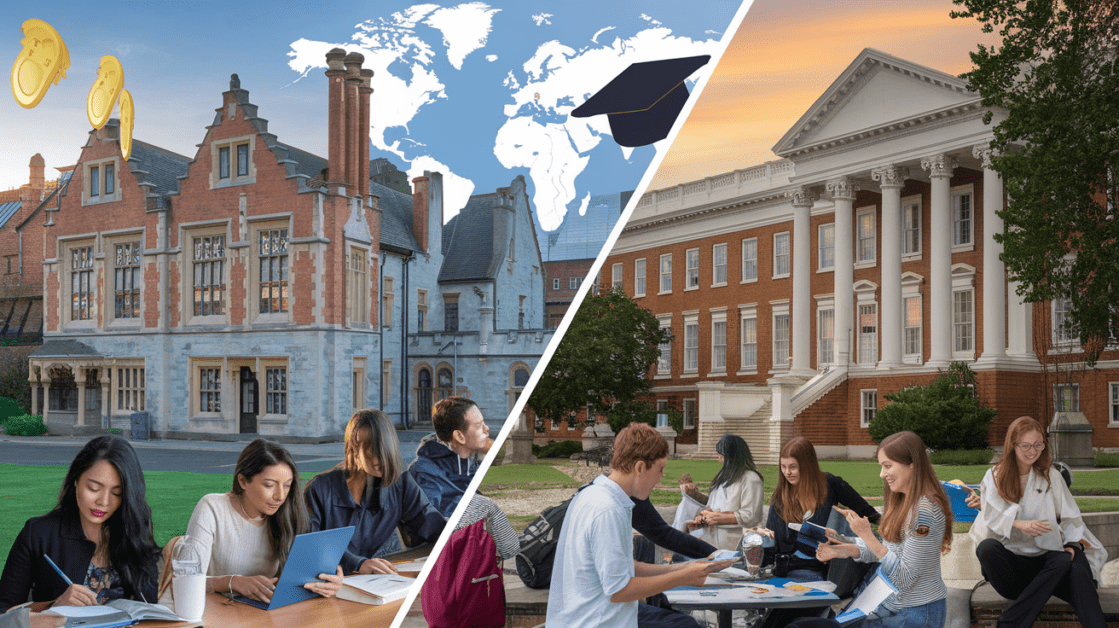🌍📚 Are you ready to embark on an international education journey in 2024? Brace yourself for a transformative experience that goes beyond traditional learning! The global education landscape is evolving at breakneck speed, and staying informed about the latest trends is crucial for success.
As a student considering international education, you might be wondering: How can I make the most of my global learning experience? 🤔 The answer lies in understanding and embracing the emerging trends that are reshaping the way we learn, interact, and prepare for the future. From digital innovations to sustainability initiatives, cross-cultural competencies to flexible learning models, the world of international education is brimming with exciting possibilities.
In this blog post, we’ll explore seven key trends that are set to define international education in 2024. We’ll delve into how digital transformation is revolutionizing global classrooms, why eco-friendly campuses are becoming the norm, and how institutions are prioritizing students’ mental health and well-being. So, whether you’re a prospective international student or simply curious about the future of education, buckle up for an insightful journey into the cutting-edge developments shaping tomorrow’s learning landscape. 🚀
Table of Contents
Digital Transformation in Global Education

The landscape of international education is rapidly evolving, with digital transformation at the forefront of this change. As we delve into the emerging trends, it’s crucial to understand how technology is reshaping the global education sector.
Rise of AI-powered learning platforms
Artificial Intelligence is revolutionizing the way students learn across borders. AI-driven platforms are offering:
Adaptive learning paths
Intelligent tutoring systems
Automated grading and feedback
These innovations are enabling personalized education at scale, breaking down geographical barriers and making quality education more accessible worldwide.
Personalized learning experiences through big data
Big data analytics is transforming how educational institutions tailor their offerings:
Data Type | Application |
|---|---|
Learning patterns | Customized curriculum |
Performance metrics | Targeted interventions |
Engagement data | Optimized content delivery |
This data-driven approach ensures that students receive education tailored to their unique needs and learning styles, enhancing both efficiency and effectiveness.
Blockchain for secure academic credentials
Blockchain technology is addressing longstanding issues in credential verification:
Tamper-proof digital certificates
Instant verification of qualifications
Reduced fraud in academic credentials
Simplified transfer of credits between institutions
This innovation is particularly beneficial for international students, streamlining the process of proving their academic achievements across borders.
Virtual and augmented reality in classrooms
VR and AR are bringing immersive experiences to global education:
Virtual field trips to historical sites
3D modeling for complex scientific concepts
Language immersion through simulated environments
Cross-cultural exchanges in virtual spaces
These technologies are breaking down physical barriers, allowing students to explore and interact with educational content in unprecedented ways.
As we look at these digital transformations, it’s clear that they’re not just enhancing learning experiences but also preparing students for a technologically advanced global workforce. Next, we’ll explore how this digital shift aligns with another crucial trend in international education: sustainable and eco-friendly campus initiatives.
Sustainable and Eco-friendly Campus Initiatives

As the global focus on environmental sustainability intensifies, universities worldwide are embracing eco-friendly practices and initiatives. These efforts not only reduce the environmental impact of educational institutions but also provide students with valuable hands-on experience in sustainability.
Student-led Environmental Projects
Universities are increasingly empowering students to take the lead in campus sustainability efforts. These projects not only contribute to a greener campus but also foster leadership skills and environmental awareness among students.
Recycling and waste reduction programs
Community gardens and composting initiatives
Energy conservation campaigns
Water-saving initiatives
Sustainability-focused Curricula
Educational institutions are integrating sustainability into their academic offerings, preparing students for a future where environmental consciousness is crucial.
Degree Program | Sustainability Focus |
|---|---|
Environmental Science | Ecosystem management, climate change mitigation |
Sustainable Business | Green marketing, circular economy principles |
Sustainable Engineering | Renewable energy systems, green building design |
Urban Planning | Sustainable city development, green infrastructure |
Green Architecture and Renewable Energy Adoption
Campuses are undergoing transformations to become more environmentally friendly, with a focus on sustainable building practices and clean energy sources.
LEED-certified buildings with energy-efficient designs
Solar panel installations on rooftops and parking structures
Geothermal heating and cooling systems
Green roofs and living walls for improved insulation and air quality
Net-zero Carbon Emissions Goals
Many universities are setting ambitious targets to achieve carbon neutrality, demonstrating their commitment to combating climate change.
Comprehensive carbon footprint assessments
Implementation of carbon offset programs
Transition to electric vehicle fleets for campus transportation
Partnerships with local communities for broader sustainability impact
As we explore these eco-friendly initiatives, it’s clear that sustainability is becoming an integral part of the international education experience. Next, we’ll delve into how cross-cultural competence and global citizenship are shaping the future of education worldwide.
Cross-cultural Competence and Global Citizenship

In today’s interconnected world, international education is increasingly focused on developing cross-cultural competence and fostering global citizenship. This shift is crucial for preparing students to thrive in a diverse and globalized workforce.
Virtual Exchange Programs and Digital Collaborations
Virtual exchange programs have revolutionized international education, allowing students to engage with peers from around the world without leaving their home countries. These digital collaborations offer:
Real-time cultural exchange
Cost-effective international experiences
Increased accessibility to global perspectives
Traditional Exchange | Virtual Exchange |
|---|---|
High cost | Budget-friendly |
Limited participation | Wider accessibility |
Travel required | Location-independent |
Fixed duration | Flexible timeframes |
Global Issues Integration Across Disciplines
Educational institutions are now integrating global issues into various academic disciplines:
Environmental science courses addressing climate change from a global perspective
Business programs focusing on international markets and cross-cultural management
Literature classes exploring diverse global narratives and perspectives
This interdisciplinary approach helps students understand complex global challenges and their interconnectedness.
Increased Focus on Intercultural Communication Skills
Developing strong intercultural communication skills is now a priority in international education. Students are learning to:
Navigate cultural differences effectively
Adapt communication styles for diverse audiences
Recognize and respect cultural nuances in verbal and non-verbal communication
Emphasis on Multilingual Education
Multilingual proficiency is increasingly valued in the global job market. International education programs are responding by:
Offering a wider range of language courses
Integrating language learning with cultural studies
Encouraging immersive language experiences through study abroad programs
By focusing on these aspects, international education is equipping students with the skills and perspectives needed to become true global citizens, ready to tackle the challenges of our interconnected world.
Flexible and Hybrid Learning Models

As education continues to evolve, flexible and hybrid learning models have emerged as a significant trend in international education. These innovative approaches offer students more control over their learning journey and better accommodate diverse needs and preferences.
Self-paced learning options
Self-paced learning allows students to progress through course material at their own speed, balancing their studies with other commitments. This approach offers several advantages:
Personalized learning experience
Reduced stress and improved retention
Ability to fast-track or take extra time as needed
Industry-partnered practical training
Collaborations between educational institutions and industry partners provide students with valuable real-world experience. These partnerships often include:
Type of Training | Benefits |
|---|---|
Internships | Hands-on experience in chosen field |
Project-based learning | Solving real industry challenges |
Mentorship programs | Guidance from experienced professionals |
Micro-credentials and stackable degrees
Micro-credentials offer focused, short-term learning experiences that can be combined to form larger qualifications. This trend provides:
Flexibility to build customized skill sets
Quicker entry into the job market
Opportunity for lifelong learning and career pivots
Blended online and in-person courses
Blending online and in-person instruction creates a dynamic learning environment that combines the best of both worlds:
Enhanced accessibility and convenience
Improved engagement through diverse learning modalities
Development of digital literacy skills
Opportunities for global collaboration
As we move forward, these flexible and hybrid learning models are reshaping the landscape of international education, preparing students for a rapidly changing world. Next, we’ll explore how institutions are prioritizing mental health and well-being support to ensure students thrive in these new educational paradigms.
Mental Health and Well-being Support

In recent years, universities worldwide have recognized the critical importance of mental health and well-being support for students. This shift reflects a broader understanding of the challenges faced by international students and the need for comprehensive support systems.
Integration of well-being into academic curricula
Universities are increasingly incorporating well-being concepts into their academic programs. This approach ensures that students not only learn about mental health but also develop practical skills to manage their own well-being.
Stress management courses
Emotional intelligence workshops
Time management seminars
Resilience-building exercises
Peer support networks
Peer-to-peer support has emerged as a powerful tool in promoting mental health on campus. These networks provide students with relatable support and foster a sense of community.
Benefits of Peer Support Networks |
|---|
Reduced feelings of isolation |
Improved academic performance |
Enhanced cultural integration |
Increased overall satisfaction |
Mindfulness and stress-reduction programs
Many institutions now offer mindfulness and stress-reduction programs to help students cope with academic pressures and personal challenges.
Meditation sessions
Yoga classes
Breathing exercises
Art therapy workshops
Expanded counseling services
Universities are expanding their counseling services to meet the diverse needs of international students. This includes:
Multilingual counselors
Online therapy options
24/7 helplines
Culture-specific support groups
By prioritizing mental health and well-being, universities are creating more supportive environments for international students to thrive academically and personally. This holistic approach to education is becoming increasingly important in the global education landscape.
Skills-based Education for Future Workforce

As the global job market evolves, international education is adapting to prepare students for the workforce of tomorrow. Let’s explore how skills-based education is shaping the future of learning across borders.
Artificial Intelligence and Machine Learning Courses
Universities worldwide are integrating AI and ML courses into various disciplines:
Computer Science
Business Analytics
Healthcare Informatics
Engineering
AI/ML Application | Industry |
|---|---|
Predictive Analysis | Finance |
Natural Language Processing | Marketing |
Robotics | Manufacturing |
Image Recognition | Healthcare |
Entrepreneurship and Innovation Hubs
Campus innovation centers are becoming crucial for nurturing future business leaders:
Incubator programs for student startups
Mentorship from industry experts
Pitch competitions with real investors
Collaborative workspaces for interdisciplinary projects
Coding and Digital Literacy Across All Majors
Digital skills are no longer confined to IT departments:
Journalism students learn data visualization
Art majors explore digital design tools
Business students master advanced Excel and data analysis
History departments incorporate digital archiving techniques
Focus on Soft Skills Development
While technical skills are important, soft skills remain crucial for career success:
Communication workshops
Leadership seminars
Cross-cultural teamwork projects
Problem-solving challenges
As we move forward, these skill-based educational approaches will play a vital role in shaping well-rounded, adaptable professionals ready to tackle the challenges of a rapidly changing global workforce.
Diversity, Equity, and Inclusion Initiatives

As international education continues to evolve, institutions are placing greater emphasis on diversity, equity, and inclusion (DEI) initiatives. These efforts are crucial for creating a welcoming and supportive environment for all students, regardless of their background or origin.
Support Systems for International Students
Universities are implementing comprehensive support systems to help international students thrive. These include:
Language support programs
Cultural adaptation workshops
Peer mentoring initiatives
Dedicated international student advisors
Cultural Sensitivity Training for Faculty and Staff
To foster an inclusive campus environment, institutions are prioritizing cultural sensitivity training:
Training Component | Purpose |
|---|---|
Cross-cultural communication | Improve interactions with diverse student populations |
Unconscious bias awareness | Identify and mitigate personal biases |
Global perspectives | Enhance understanding of various cultural contexts |
Inclusive teaching methods | Adapt teaching styles to accommodate diverse learners |
Inclusive Curriculum Design
Educational institutions are revising their curricula to reflect diverse perspectives and experiences:
Incorporating global case studies
Featuring works by authors from various cultural backgrounds
Offering courses on non-Western philosophies and histories
Integrating multicultural elements into existing courses
Scholarships for Underrepresented Groups
To promote equal access to international education, universities are expanding scholarship opportunities:
Need-based financial aid for students from developing countries
Merit scholarships for underrepresented minorities
Grants for first-generation college students
Fellowships for women in STEM fields
These DEI initiatives are transforming the landscape of international education, creating more equitable and inclusive learning environments. As we move forward, the focus on mental health and well-being support becomes equally crucial in ensuring student success.
Conclusion

The landscape of international education is evolving rapidly, presenting students with exciting opportunities and challenges. From digital transformation and sustainable campus initiatives to cross-cultural competence and flexible learning models, the trends shaping global education in 2024 are diverse and impactful. As institutions prioritize mental health support, skills-based education, and diversity initiatives, students are better equipped to thrive in an increasingly interconnected world.
As you navigate your educational journey, embrace these emerging trends and seek out opportunities that align with your goals and values. Whether it’s participating in eco-friendly campus projects, developing global citizenship skills, or leveraging hybrid learning options, remember that your educational experience extends far beyond the classroom. By staying informed and adaptable, you’ll be well-positioned to make the most of your international education and prepare for success in the global workforce of tomorrow.

